How truly Great was Emperor Constantine the Great?
When Constantine raised the Christian cross above his armies, the world changed. Yet behind the miracle at the Milvian Bridge lies an enduring question—did faith guide the emperor, or did empire guide his faith?
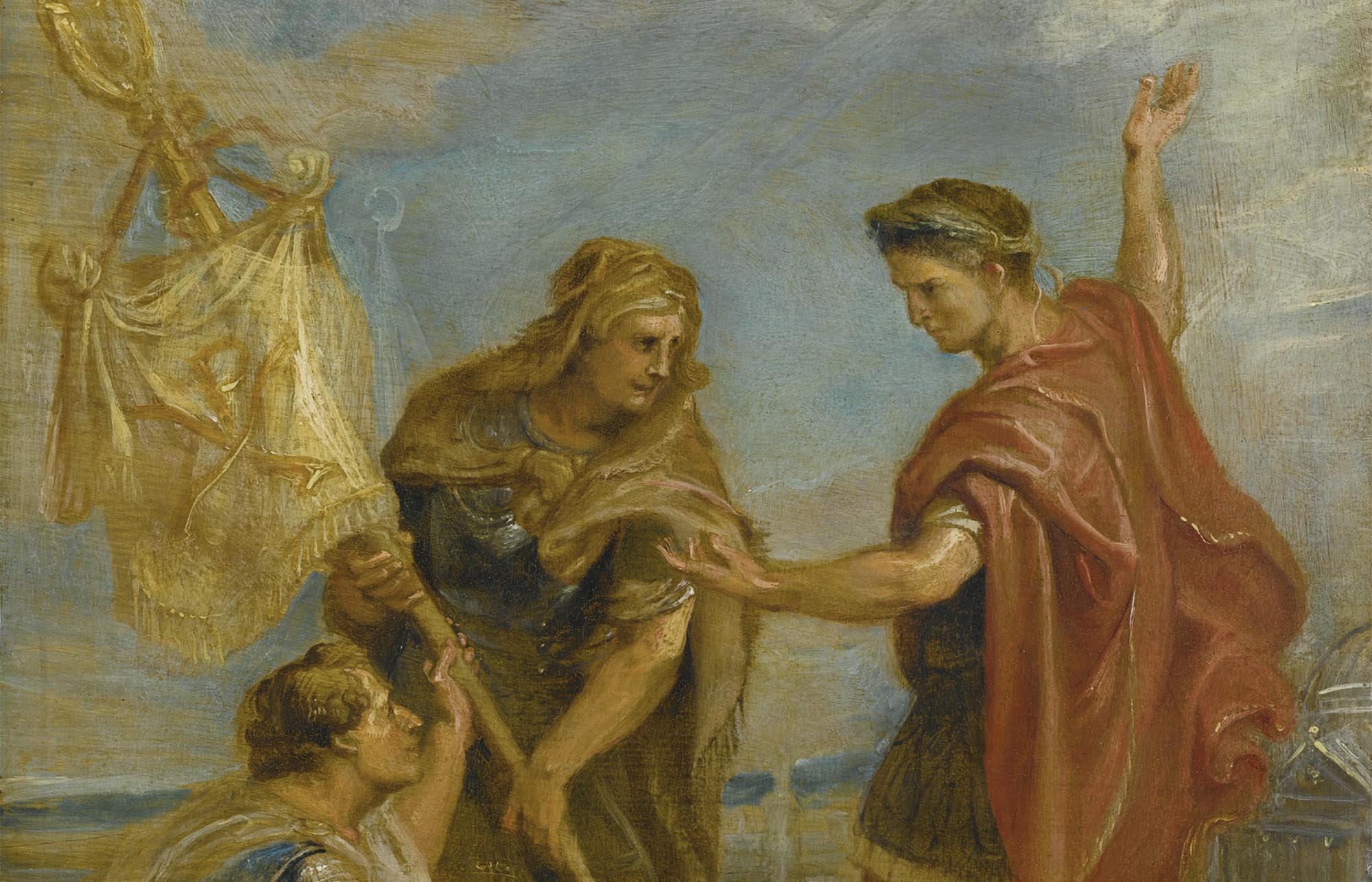
Few emperors have been praised, studied, and mythologized as much as Constantine the Great — the man who ended the persecutions, legalized Christianity, and founded a new capital that would bear his name for a thousand years. Yet behind the golden legends lies a more complex figure: a ruler shaped as much by politics as by faith, whose conversion still divides historians.
Was Constantine truly a Christian emperor, or a pragmatic statesman who saw in the new religion a tool to restore unity to a fractured world? His reign stands at the meeting point between the pagan past and the Christian future — an age not of miracles, but of transformation.
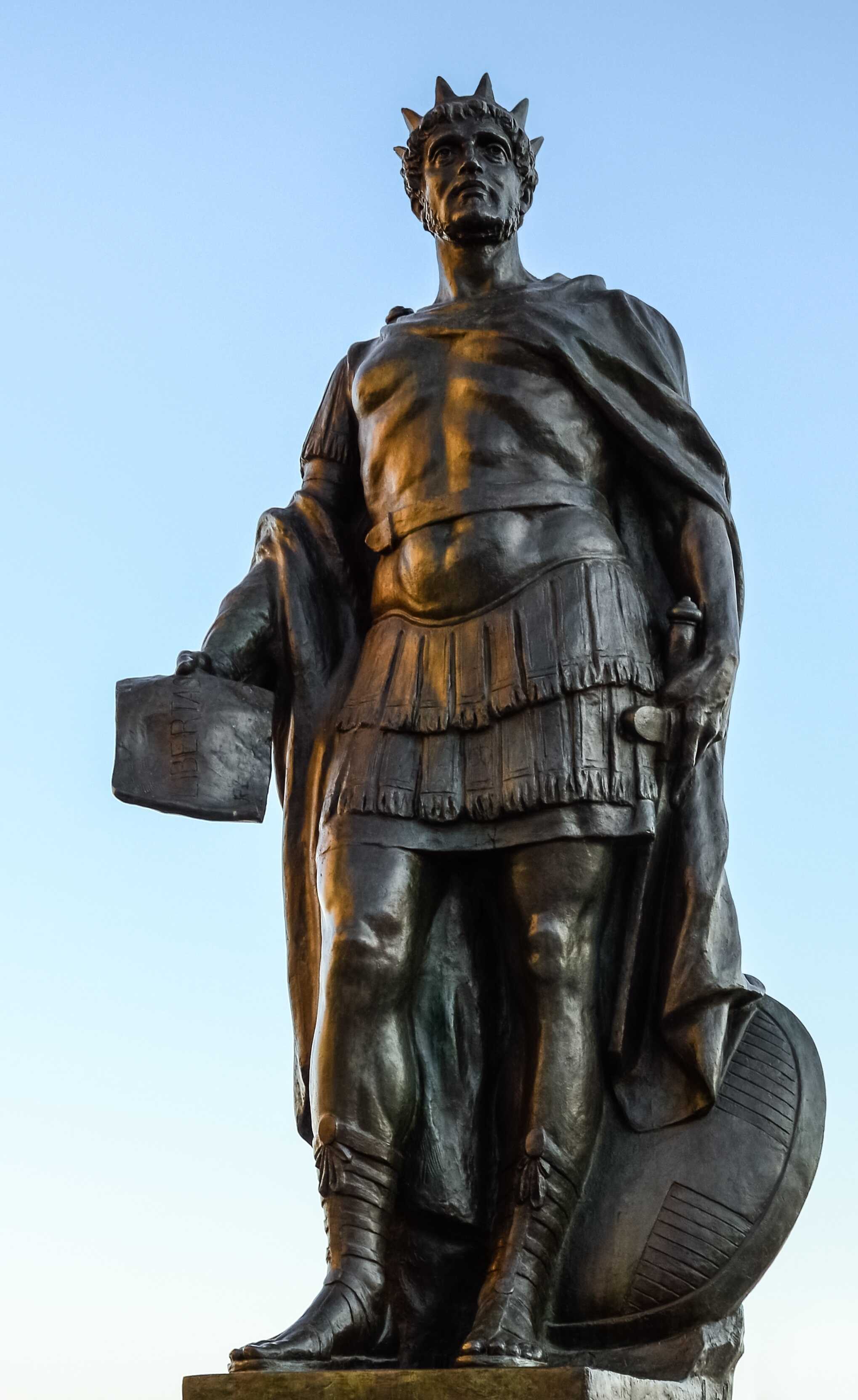
The Making of an Emperor
Constantine’s beginnings were humble and, in some respects, mysterious. He was born in or near the Moesian city of Naissus (modern Niš, Serbia), the eldest son of Flavius Valerius Constantius, who would later become emperor.
The exact year of his birth remains uncertain: most scholars accept February 27, 272 CE, though some ancient sources suggest 276 or even 288. Constantine himself may have encouraged the confusion, often depicting his features as younger than his years in official portraits and imperial panegyrics — a deliberate reshaping of image that would mark his career.
His mother, Helena, was of modest background. Later writers, such as Jerome and Ambrose, described her as a concubine or even a stable maid when she met Constantius, who left her around 289 to marry Theodora, the stepdaughter of Emperor Maximian. Constantine’s family origins, then, were provincial and unpretentious — Illyrian rather than aristocratic — but the rise of his father within the imperial military provided him with a powerful foothold.
Constantius, originally a protector (imperial bodyguard) under Emperor Aurelian, advanced rapidly when fellow Illyrians Diocletian and Maximian seized power in the 280s. By 293, Diocletian’s new system of government — the Tetrarchy, or “rule of four” — elevated Constantius to the rank of Caesar, serving as junior emperor under Maximian in the West, while Galerius, another Illyrian officer, became Caesar in the East.
Constantine prospered under this new arrangement. He received a thorough education, mastering Latin, gaining fluency in Greek, and developing an interest in philosophy and literature. Yet his true path was military. Sent east to the courts of Diocletian and Galerius, he served as both a promising officer and a political hostage — proof of his father’s loyalty to the Tetrarchy.
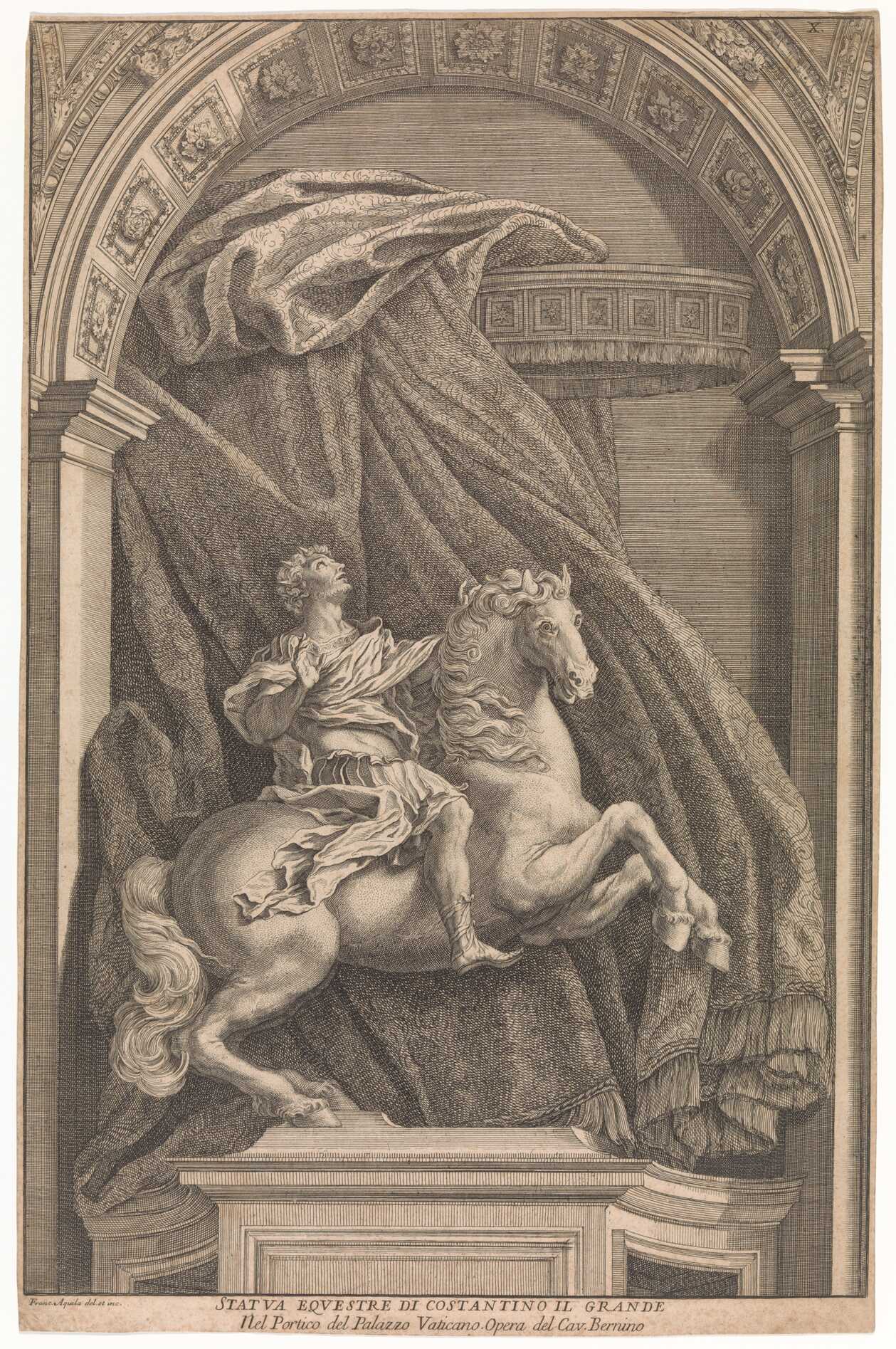
Ancient sources credit him with campaigns in Asia Minor, Mesopotamia, and Egypt, where he likely fought under Galerius in Persia (298 CE) and accompanied Diocletian during his Egyptian expedition. By his early thirties, Constantine had already seen the eastern frontiers of the empire — experience that would later distinguish him from his western rivals.
When Diocletian abdicated in 305, compelling his co-emperor Maximian to do the same, the system faced its first true test. Constantius and Galerius became the new Augusti, appointing Severus and Maximin Daia as Caesars. This succession sidelined the natural heirs — Constantine, and Maximian’s son Maxentius — sowing resentment that would soon erupt into civil war.
Under Galerius’s watch, Constantine’s life was precarious. Later accounts, colored by legend, claim he was sent on dangerous campaigns and even forced into combat with wild beasts to satisfy Galerius’s cruelty. Whatever the truth, Constantine distinguished himself and earned the title of tribune of the first order.
In 305, hearing of his father’s campaign in Britain, Constantine sought leave to join him. Galerius, reluctant to release a potential rival, granted permission only after a night of heavy drinking — too late to retract it the next morning. Constantine had already fled, galloping westward through the imperial postal system (cursus publicus), selecting the best horses at each station and crippling the rest to prevent pursuit.
He reached Constantius first in Bononia (modern Boulogne), and together they crossed to Britain to fight the Picts. Months later, Constantius died in Eburacum (York), with Constantine at his side.
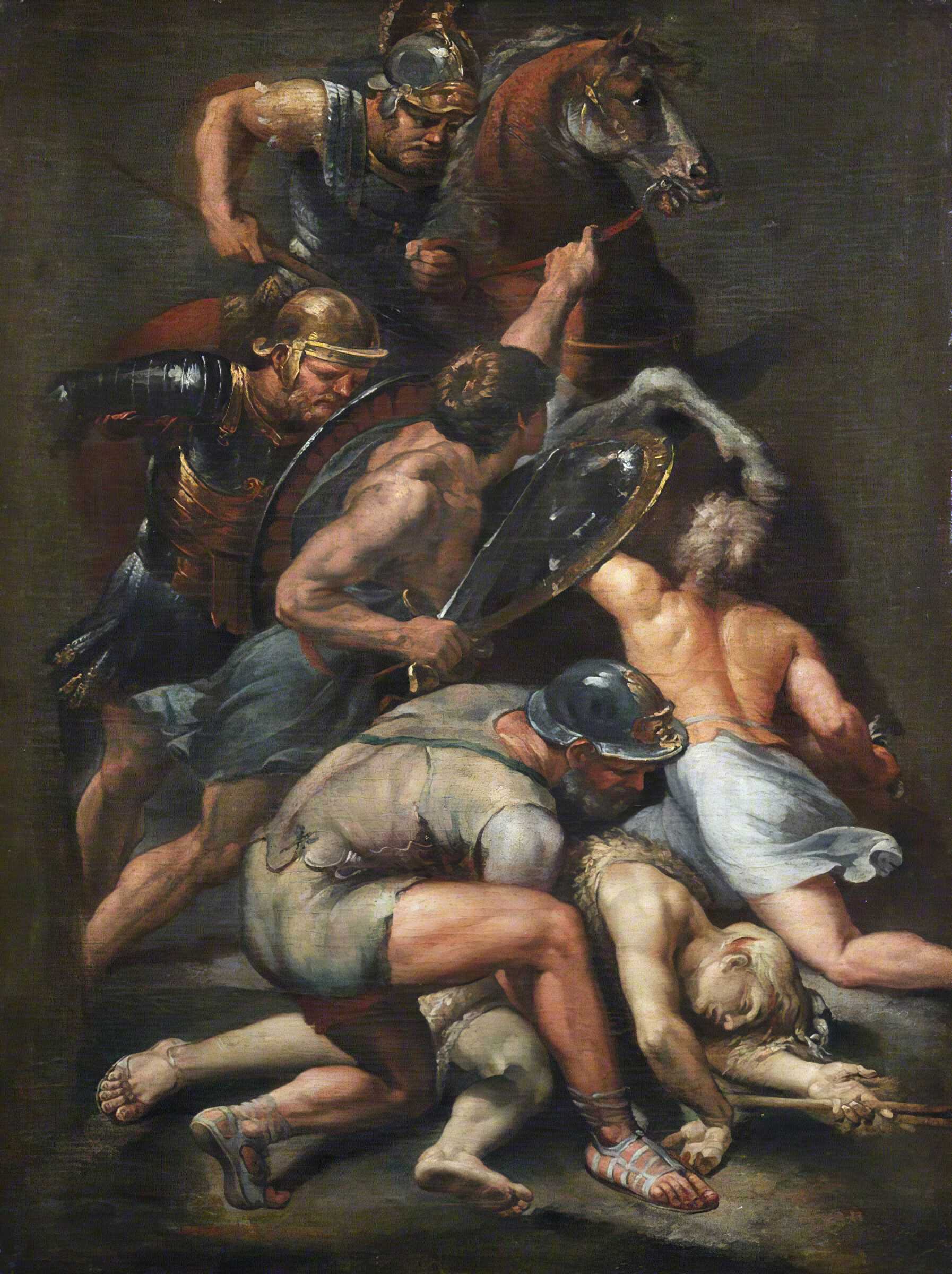
From York to the Tiber: Acclamation and the Fall of Maxentius (306–312)
On July 25, 306, the army at Eburacum (York) acclaimed Constantine emperor on the death of his father, Constantius—an act traditional to Rome’s legions but disruptive to Diocletian’s Tetrarchic order. Galerius, the senior Augustus, fumed, then grudgingly recognized Constantine only as Caesar, promoting Severus to Augustus.
In Rome, Maxentius (son of the retired emperor Maximian) mocked Constantine as the son of a harlot and, on October 28, 306, had the praetorians and urban cohorts proclaim him ruler (with the archaizing title princeps). He soon recalled Maximian from retirement to share the purple and launched a populist program in the capital—expanding the guards, flattering the populus Romanus, and pouring money into monumental works (Circus Maximus, the great basilica), even naming his son Romulus.
When Severus marched from Milan to suppress Maxentius, his troops defected—many had served under Maximian—and Severus fled to Ravenna, only to be lured out and captured. Galerius then invaded Italy himself (307), threatening Rome’s Senate and people, but his troops, tempted by Maxentius’s money and propaganda, wavered; he withdrew, allowing them to plunder the countryside as the price of loyalty. Rome’s stout walls and political theater had bought Maxentius time.
Constantine, meanwhile, behaved like a dutiful junior ruler on the Rhine: campaigning against Franks (parading chieftains Ascaric and Merogaisus and having them thrown to beasts at Trier), bridging the Rhine near Cologne, and shoring up his position through dynastic alliance. In 307, Maximian married his daughter Fausta to Constantine, who set aside Minervina and—crucially—began styling himself Augustus. A celebratory panegyric framed the new hierarchy with studied deference:
“It becomes you, father, to survey from your pinnacle of command the world you share… You, young man, it behooves to traverse frontiers tirelessly… to send frequent laurels of victory to your father-in-law.”
Maxentius’s Rome, however, grew volatile. His rupture with Maximian alienated North Africa, where the vicarius L. Domitius Alexander was acclaimed; the grain lifeline to Rome faltered, famine struck, riots erupted, and by 309 Maxentius unleashed the praetorians, with reports of thousands slain. In the east, the religious climate hardened: though Galerius issued an edict of toleration in 311, Maximin Daia soon revived persecution.
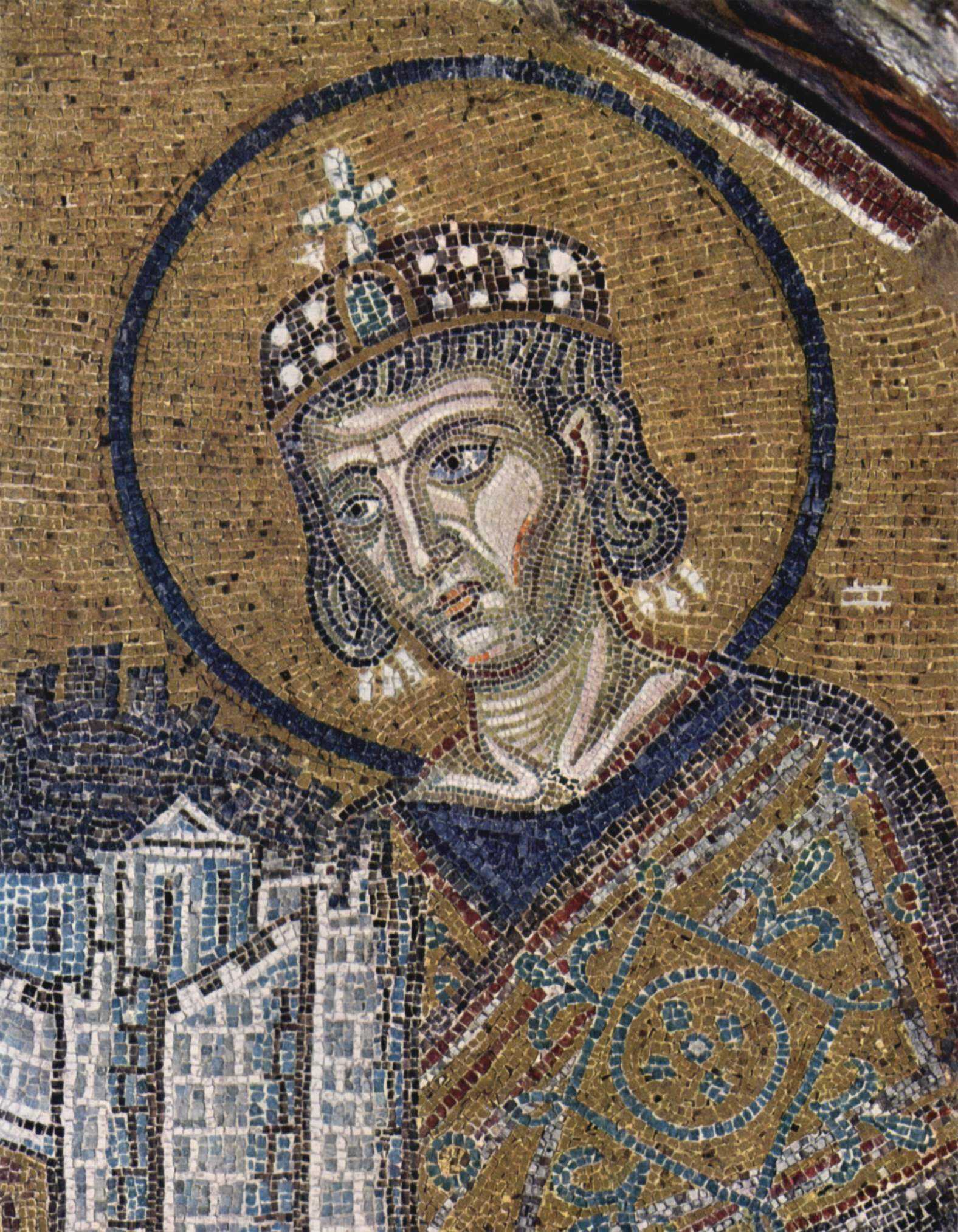
Constantine, who had witnessed the Great Persecution’s beginnings and whose father had never enforced it zealously, quickly granted freedom of worship in his own realms—marking him as a pragmatic friend to Christians even while his public symbolism remained unabashedly pagan.
The politics turned deadlier in 310. Maximian rebelled in Gaul; Constantine raced from Cologne to Massalia (Marseilles), forced his surrender, and later compelled him to suicide after an alleged assassination plot. In the same year, Constantine’s propaganda pivoted. One panegyric “discovered” an imperial ancestor—Claudius Gothicus—to burnish Constantine’s pedigree. Another celebrated a daylight epiphany at a temple of Apollo (probably Grand, Vosges):
“You saw, O Constantine, your Apollo, accompanied by Victory, offering you laurel wreaths, each bearing a portent of thirty years…
You saw, and recognized yourself in the likeness of him to whom the divine songs had foretold rule over the whole world.”
From 310 onward, Constantine’s coins portrayed him alongside Sol Invictus, his “divine companion,” and carried vows for decades of rule — a blend of faith and propaganda asserting both divine favor and imperial longevity.
By 312, the alliance map was set. Constantine betrothed his half-sister Constantia to Licinius; Maxentius aligned with Maximin Daia against Licinius. Refusing to wait, Constantine marched fast and light over the Alps in spring 312: he burned Segusio (Susa) for resistance, beat Maxentian forces near Turin, and took Milan.
At Verona, he fought on two fronts, broke Ruricius Pompeianus, and compelled Aquileia to surrender—securing northern Italy in a whirlwind campaign. Maxentius withdrew behind Rome’s defenses, cutting bridges over the Tiber, including the Milvian Bridge, while stockpiling supplies. Constantine encamped on the Via Flaminia (near Malborghetto).
Then came the miscalculation: on October 28, 312—the sixth anniversary of his reign—Maxentius marched out, reportedly emboldened by an oracle that “the enemy of Rome would be killed that day.” At Saxa Rubra, north of the city, his army was routed. The retreat to the makeshift boat-bridge beside the shattered Milvian crossing turned to disaster; pressed by panic, armored men toppled into the river. Maxentius drowned with them.
Constantine entered Rome as victor. The praetorian guard would be abolished; the Tetrarchy’s fragile balance was broken. The struggle for the Roman world had a new master.
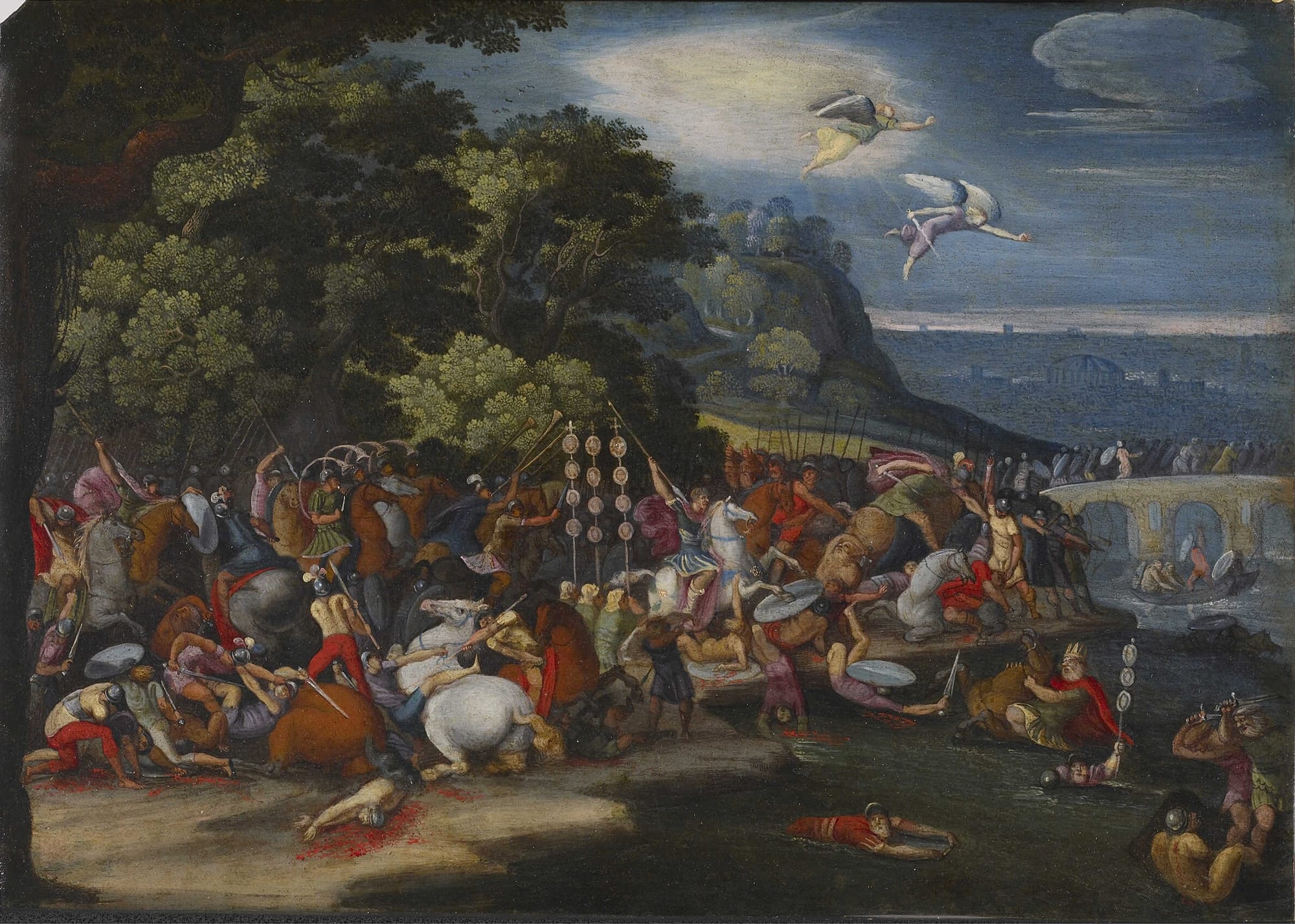
Maximus Augustus: Triumph and the Turn to Faith
The death of Maxentius in the waters of the Tiber marked more than the end of a civil war — it marked the birth of a new imperial order. His body, recovered downstream, was decapitated, and the head was displayed on a pike as Constantine entered Rome in triumph.
To many, this was justice, not fratricide. Constantine’s propaganda swiftly reimagined his rival not as a lawful emperor but as a tyrannus, a usurper whose fall liberated the city. The dedicatory inscription of the new Arch of Constantine, erected near the Colosseum in 315 CE, captured this narrative in solemn marble:
“To the emperor Caesar Flavius Constantinus the greatest, dutiful and blessed Augustus, the Senate and people of Rome dedicated this arch... because, by the inspiration of divinity and by greatness of his mind (instinctu divinitatis mentis magnitudine), with his army he avenged the state with righteous arms against the tyrant and his faction at one and the same time.
To the liberator of the city, and the establisher of peace.”
Rome’s Senate, wary yet grateful, had framed the victory as divine and restorative. The language — “by the inspiration of divinity” — left the god unnamed, a deliberate ambiguity for an emperor whose faith was still evolving. Panegyrists described Maxentius as a monster and the Romans as jubilant at his demise, while Constantine moved quickly to erase his rival’s memory.
Maxentius’s images and inscriptions were effaced (damnatio memoriae), and his grand architectural projects were completed under Constantine’s name, including a great tetraconchic arch in the Forum Boarium symbolizing restored abundance.
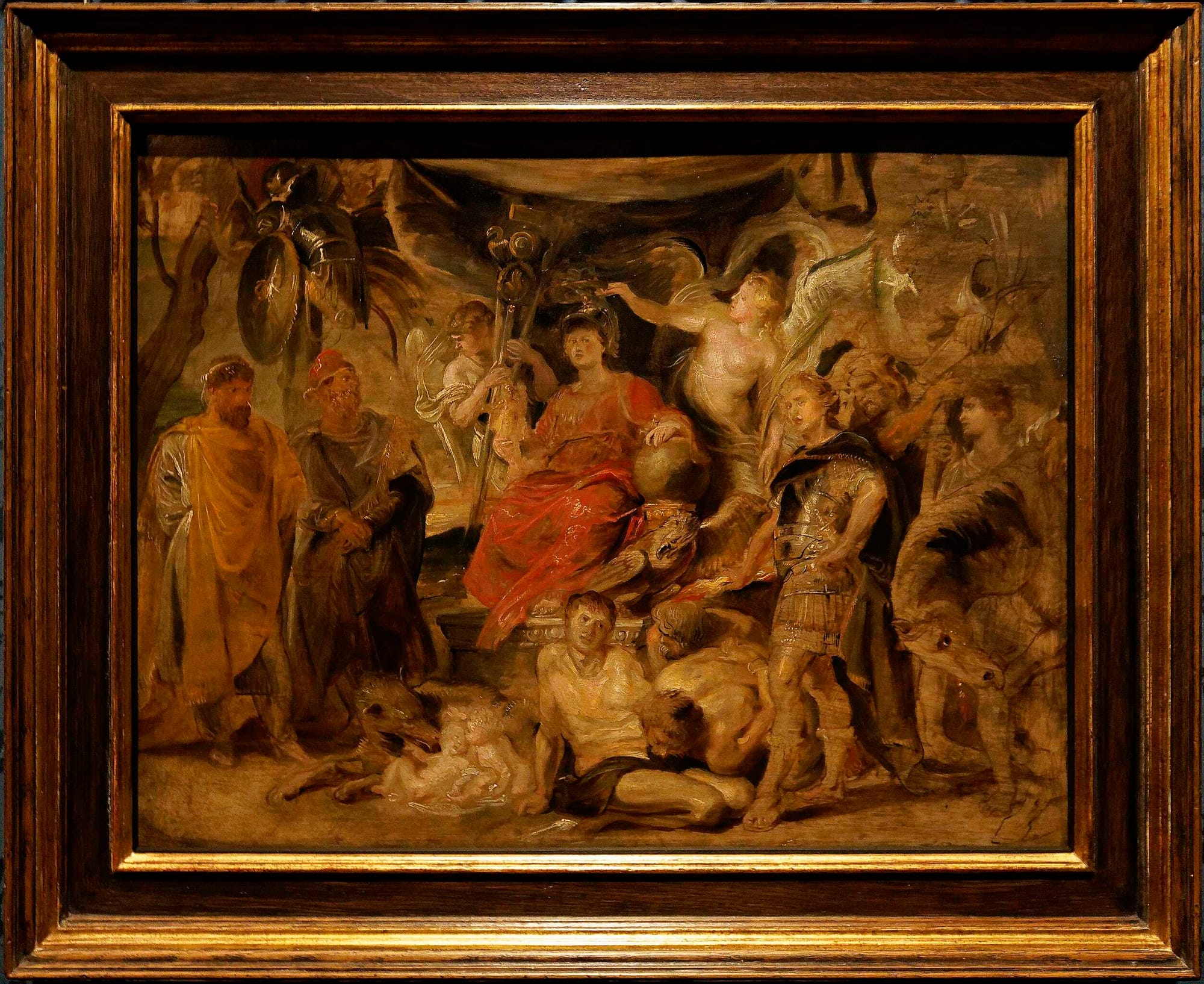
Yet Constantine’s victory was also spiritual. Ancient sources tell that, before the battle of the Milvian Bridge, he received a dream instructing him to mark his soldiers’ shields with a sacred sign:
“He was advised to mark the heavenly sign of God on the shields of his soldiers... and by means of a slanted letter X with the top of its head bent round, he marked Christ on their shields.
Lactantius, De Mortibus Persecutorum
The symbol — the Chi-Rho (☧) — intertwined the first two letters of Christos (ΧΡιστός) and transformed a solar emblem he had seen in 310 into a Christian monogram. Whether a divine revelation or a reinterpretation of earlier imagery, Constantine now understood his triumph as heaven’s mandate. Pagan inscriptions spoke of divine inspiration; Christians saw the hand of Christ.
Though the Chi-Rho was slow to appear on his coinage, Constantine’s conversion was unmistakable in action. During his months in Rome after the victory, he began building monumental Christian basilicas — foremost the Lateran Basilica, erected over the razed barracks of Maxentius’s guards.
He restored confiscated Christian property, granted clergy exemptions from civic duties, and wrote to Caecilianus, bishop of Carthage, ordering privileges for the African clergy. These gestures culminated in the Edict of Milan (313 CE), issued jointly with Licinius, guaranteeing religious freedom throughout the empire and ordering the restitution of all property seized from Christians.
Within a year of crossing the Milvian Bridge, Constantine had turned divine vision into imperial policy. He was emperor by arms and Augustus by providence — the liberator of Rome and, soon, of the Christian faith.
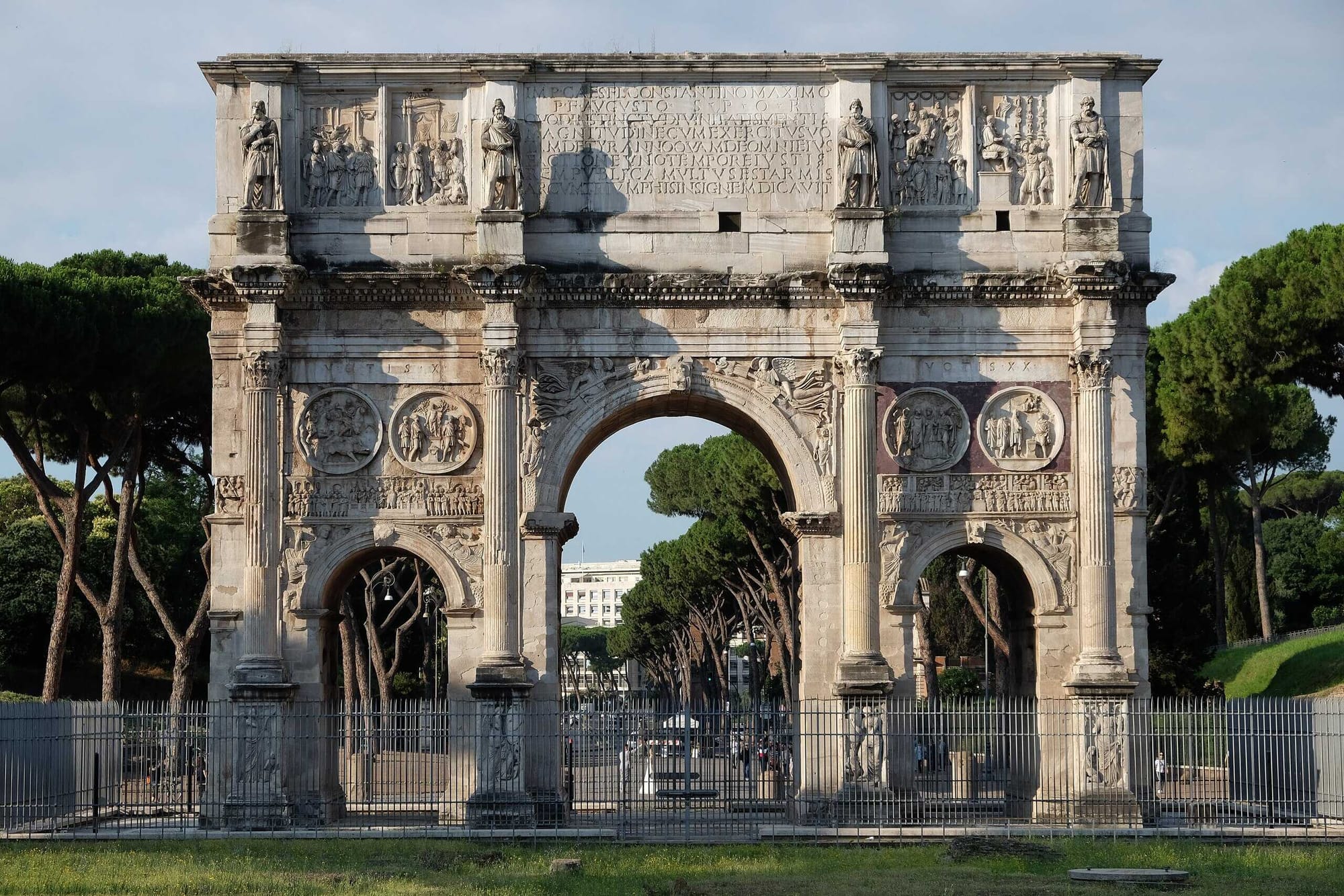
The Final Conflict with Licinius (324 CE)
In 324 CE, Constantine moved to end the diarchy. Establishing his base at Thessalonica, he built a major fleet and summoned his seasoned son Crispus to command it. On July 3, Constantine seized the initiative near Adrianople, forcing a crossing of the Hebrus and, though wounded, routed Licinius, who fled to Byzantium.
While Constantine began a land siege of the fortified promontory city, Crispus fought for control of the waterways. At the mouth of the Hellespont near Elaius, he engaged Amandus’s larger fleet with only eighty ships, outmaneuvered it in the narrow, fast current, and won decisively.
The next day, near Callipolis (Gallipoli), strong winds drove Amandus’ remaining ships onto the shore; with only four vessels left, he retreated to Byzantium. Realizing the city was lost, Licinius escaped across the Bosphorus to Chalcedon (Kadıköy).
Playing the old Tetrarchic card, Licinius named a co-Augustus, Martinianus, and posted him at Lampsacus to block a crossing. Constantine countered by assembling a separate flotilla of light transports and ferried his army across the Bosphorus to the Sacred Promontory, outflanking Licinius north of Chalcedon.
Licinius hastily recalled Martinianus and marched to meet him, but on September 18 at Chrysopolis (Üsküdar), his battered forces were crushed again. He fled to Nicomedia, where, with no army left, he sued for terms through Constantia, Constantine’s half-sister and Licinius’ wife.
Constantine agreed to spare Licinius and his son if they abdicated; Martinianus was immediately removed. The two Licinii were sent under house arrest to Thessalonica, subjected to damnatio memoriae, and—on later charges of treason—executed (father in 325/326, son in 326). Constantine now stood sole ruler of the Roman world. (The Cambridge companion to the age of Constantine, edited by Noel Lenski)
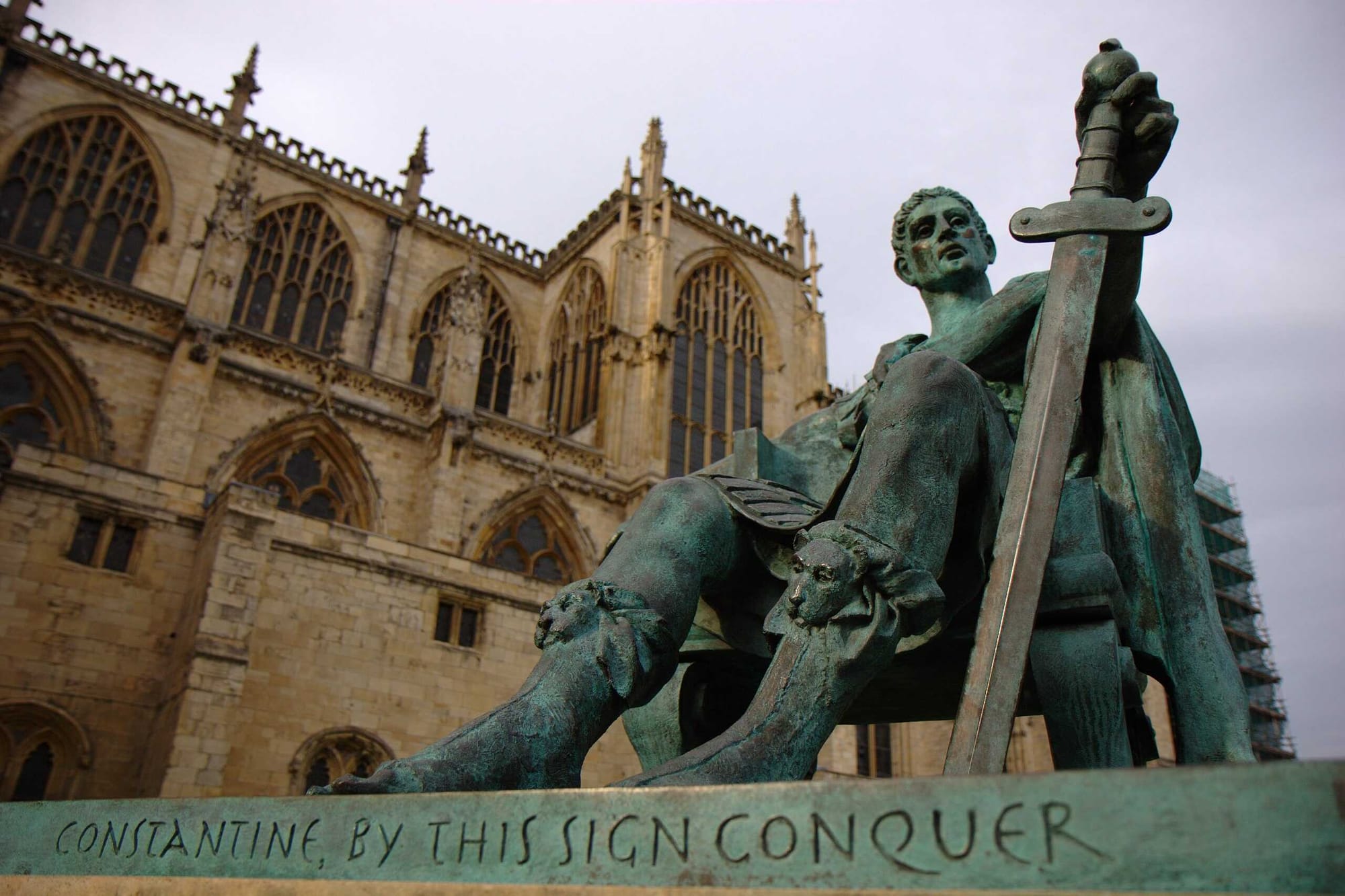
The Emperor as God’s Instrument
From the moment of his conversion in 312 CE until his death in 337, Constantine reshaped the very meaning of imperial power. What had once been the dominion of men ruling by might became the image of a ruler governing by divine mandate. The emperor now stood as the earthly instrument of God, entrusted to bring unity and peace to a world fractured by war and disbelief.
The transformation began on the eve of the Battle of the Milvian Bridge, when Constantine reportedly saw a radiant cross above the sun bearing the words “In this sign, conquer.” The victory that followed convinced him that the Christian God had chosen him for a sacred purpose. From that moment, he ruled not only as emperor but as one ordained by heaven to guide the empire toward truth.
His conversion was sincere yet measured. Constantine legalized Christianity and restored property seized during the persecutions, but he did not immediately abandon the older gods. Instead, he pursued balance—maintaining traditional forms of worship while openly favoring the faith he believed had delivered him to power.
His new allegiance was made visible through the grand churches he commissioned: the Lateran Basilica in Rome, the Church of the Holy Sepulcher in Jerusalem, and the basilicas that soon marked the empire’s great cities. Constantine’s view of his role was unprecedented.
He described himself as “the servant of God” (famulus Dei) and even as “bishop of those outside the Church.” The emperor who had once acted as high priest of the pagan gods now imagined his authority as flowing from the Christian God. Political power was recast as a sacred trust.
This sense of divine responsibility drew him deeply into the life of the Church. When disputes divided the faithful—from the Donatist schism in North Africa to the Arian controversy in Egypt—he acted as arbiter, summoning councils and urging peace among bishops.
The Council of Nicaea in 325 CE became the clearest expression of his new authority: the emperor himself presiding over the assembly of bishops, uniting empire and Church beneath a single divine order. (Constantine the Great and Christian Imperial Theocracy, by Charles Matson Odahl)
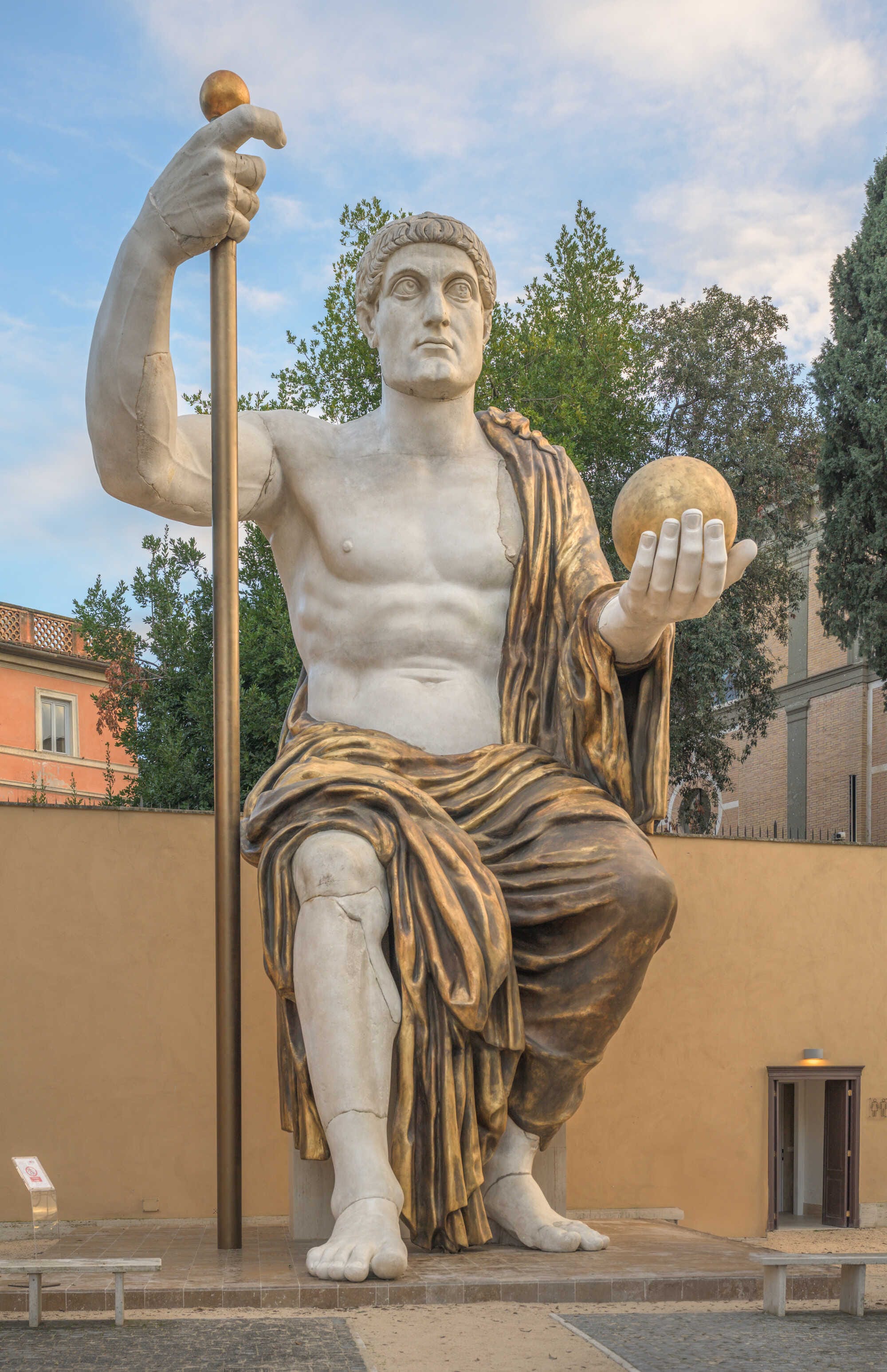
Was Constantine’s Conversion Real or a Political Game?
The story of Constantine’s conversion remains one of history’s most debated moments. In 312 CE, after a vision said to have changed the course of empire, he embraced the Christian God and began reshaping Rome in faith and law. But was this the revelation of a believer—or the calculation of a statesman? Historians still disagree, and each reading reveals a different face of the first Christian emperor.
H. A. Drake — The Believer Who Governed by Faith
Drake sees Constantine as a man of conviction whose faith and politics worked in harmony. His conversion was genuine, yet never naïve. Having witnessed decades of civil war, he believed the Christian God offered the unity his empire so desperately needed. Drake calls this vision concordia—a sacred balance between Church and state. For him, Constantine’s rule was less about enforcing belief than about securing peace under divine order.
Timothy D. Barnes — The Politician of Providence
Barnes reads the same story differently. To him, Constantine’s conversion was the move of a master strategist who understood that aligning with Christianity meant commanding a growing, disciplined community. The emperor’s faith deepened only later, shaped by bishops and court theologians who cast him as heaven’s chosen ruler. What began as political wisdom, Barnes suggests, was later wrapped in the language of revelation.
Peter Leithart — The Visionary of Christendom
Leithart paints a portrait of a ruler guided by conviction rather than calculation. Constantine, he argues, did not distinguish between belief and empire: both were part of the same divine plan. His victories, his laws, even his new capital were extensions of that faith. In Leithart’s telling, Constantine truly believed history itself had turned toward Christ—and that he was its chosen instrument.
A. H. M. Jones — The Soldier of Two Worlds
Jones offers the most tempered view. Constantine’s faith, he writes, was sincere but incomplete—the faith of a soldier-emperor still standing between two worlds. His tolerance for pagan worship was not hypocrisy but prudence, the mark of a ruler who could not erase centuries of custom overnight. Only at the end, when baptized on his deathbed, did Constantine’s belief fully eclipse his old loyalties.
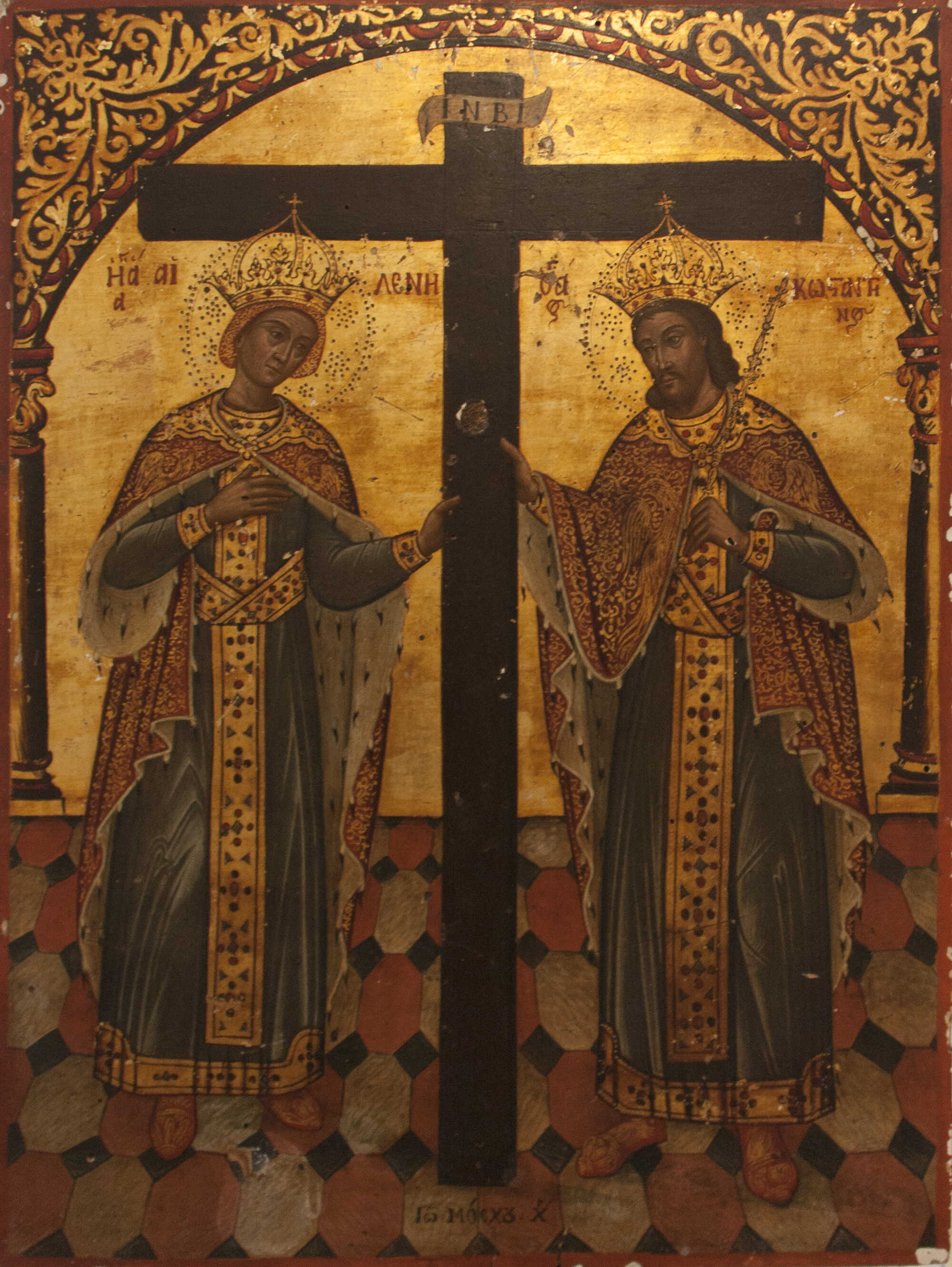
Under Constantine, the Roman Empire evolved into a Christian monarchy. The ruler was no longer a mere commander but the visible agent of divine will, governing by the grace of God and for the protection of His people. This union of throne and faith transformed both institutions. The empire became Christian in purpose, and the Church, bound to imperial favor, became universal in reach. What began as one man’s vision before battle reshaped the destiny of the ancient world and gave birth to a new idea of empire—an empire under God.
Constantine’s faith has been praised as vision and dismissed as policy, yet the two may never have been separate. In his world, the favor of the gods and the fate of empire were one and the same. Whether guided by conviction or calculation, Constantine’s conversion reshaped history. It gave Rome a new god, a new capital, and a new idea of power—one that would endure long after the last emperor laid down his crown.

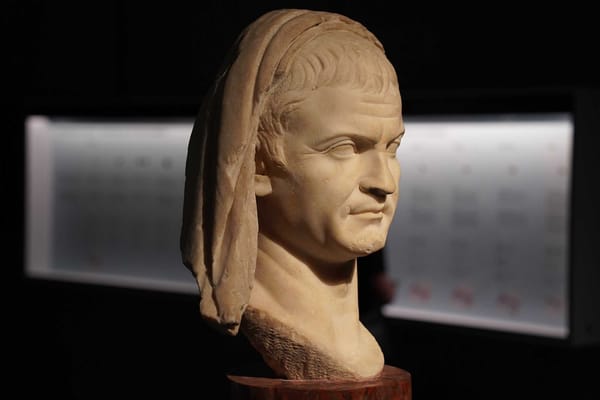
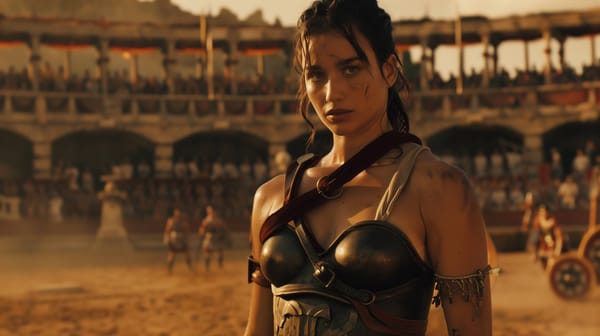

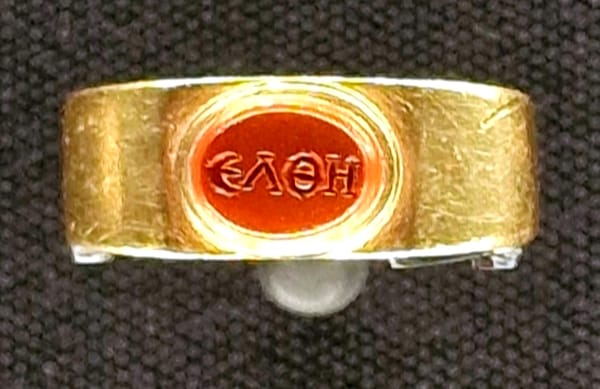
About the Roman Empire Times
See all the latest news for the Roman Empire, ancient Roman historical facts, anecdotes from Roman Times and stories from the Empire at romanempiretimes.com. Contact our newsroom to report an update or send your story, photos and videos. Follow RET on Google News, Flipboard and subscribe here to our daily email.
Follow the Roman Empire Times on social media: